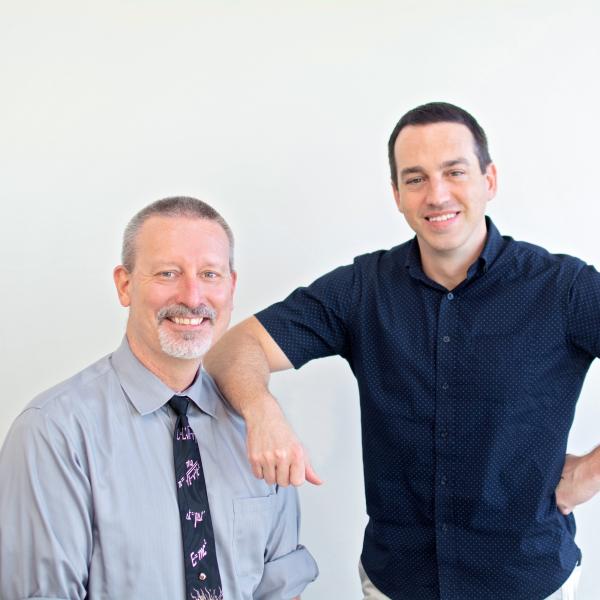Professor Loomis's research endeavors focus on the detailed interrogation and manipulation of reaction dynamics at the molecular and atomic level.
Current thrusts include the spectroscopic characterization of charge carrier dynamics within semiconductor nanostructures, bimolecular interactions, and the coherent control of chemical dynamics. The experiments utilize an array of tools, including steady-state and time-resolved single-molecule microscopy, transient-absorption spectroscopy, nanosecond and state-of-the-art femtosecond lasers, ultrashort pulse shaping, mass spectrometry and ion imaging, and absorption, fluorescence, and non-linear spectroscopy.
Charge and Exciton Dynamics within Semiconductor Nanostructures. A number of spectroscopic techniques are utilized to determine how shape affects the optical properties of semiconductor quantum nanostructures. Specifically, we, in collaboration with the group of Professor Buhro, are investigating the dependence of band gap energies on the diameter of semiconductor quantum wires. These quantum wires are ideal for studying the two-dimensional quantum confinement of excitons and propagation of charge carriers over long distances since they can be synthesized with diameters as small as 3.5 nm and lengths on the order of tens of microns. We are now using a confocal microscope coupled with ultrafast lasers to directly measure the excitonic dynamics within individual nanowires as a function of temperature, exciton energy, and chemical composition of the nanomaterial. Some of these quantum wires exhibit photoluminescence intensity blinking spanning the entire lengths of quantum wires. We continue to investigate the origins of this blinking in these unique quantum-mechanical systems.
Bimolecular Interactions and Reaction Dynamics. Frequency and time-resolved laser spectroscopy and time-of-flight ion imaging methods are implemented to accurately characterize inter-molecular potential energy surfaces and the dynamics that occur on these surfaces. Two moieties are first stabilized in a weakly bound complex by cooling the species in a supersonic expansion. By cooling the complexes to specific temperatures, we are able to stabilize the complexes with preferred orientations between the constituents. The He···ICl(X,v=0) complex, for instance, is found to have a T-shaped orientation at T~5 K and at lower temperatures, T~0.5 K, the complexes have preferred linear geometries. These complexes serve as launching pads for investigating the photo-induced dynamics that occur from these initial orientations.
Coherent Control of Chemical Dynamics. Ultrashort laser pulses are used to initiate and monitor the dynamics of molecules that can follow competing pathways. Furthermore, the properties of the excitation pulse are manipulated to quantum mechanically control the yields of the different product channels. The coherent control of biomolecular reactions is also being pursued. Two reactants are stabilized in a non-reactive complex. A laser promotes the reactants above the barrier for reaction. The probability for reaction is then controlled by steering the reactants to specific intermolecular orientations and energies.





